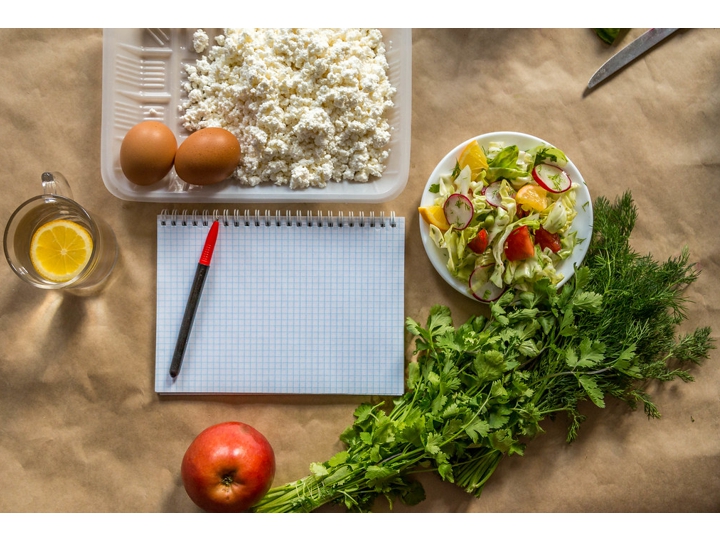
Newsletter

Newsletter : Vol. 3, Issue 2, 4 October 2022
As primary care practitioners working closely with the community, a bulk of our practice constitutes chronic lifestyle diseases. It is well known that good dietary practices help in prevention and control of these illnesses. Yet we don’t give due importance or time to diet counselling in our OPD settings.
The reasons for this are manifold. First comes the lack of emphasis on nutrition during our medical training. Apart from the minimal exposure in community medicine and paediatrics, the importance of diet and the role of the medical practitioner in improving nutrition of the patients is largely ignored. The same goes for post graduate training as well where the emphasis is on diagnosis and treatment rather than prevention and support. As a result, most doctors are ill equipped and lack the necessary skills in diet counselling.
Secondly it is the sheer volume of patients and lack of time that prevents physicians from delving deep into patient’s dietary practices. The cultural variations in diet in our country and lack of access to healthy foods for certain strata of society are other reasons that prevent physicians from broaching this topic. But there have been many studies which have proven the beneficial role dietary modifications have on people’s health and wellbeing. Here are a few ways in which you can try to include nutrition into your daily practices.
Just like we tell patients to maintain blood sugar and home BP monitoring values in a book to see them during follow up visits, ask the patient to maintain a food log too. Tell them to note down everything they eat in a day including snacks and beverages. You can go through this along with their blood sugar/ BP values and identify potential issues with foods and suggest alternatives accordingly.
Lecturing the patient about why they shouldn’t drink soft drinks or eat French fries, most likely makes them feel guilty or judged, thereby closing them off to anything you say. Instead, ask them an open question “So how do you think you can eat healthier?” Be non-judgemental and supportive. Most patients realise their mistake but are stuck in bad habits and routines. Pick one meal, craving or habit and suggest ways to make changes. Focus on “why” rather than the “what”. Since it was identified by the patient themselves, they will be more likely to follow it.
Instead of mentioning fancy names like DASH diet, Mediterranean diet, Keto etc, try to explain the core basics of healthy eating. Principles of healthy eating include higher intake of whole grains and fibre rich food, variety of vegetables and fruits, low saturated fats, lean meat, limited sodium and processed foods, and adequate water intake. These are universal and easier for the patient to incorporate into their daily diet rather than adopting a whole new diet pattern which is alien to them.
I recently had a patient who had hypothyroidism and obesity. When I was trying to address the issues with her diet, she confidently stated that she uses only olive oil for cooking. Upon further enquiry I realised she was having bondas, pakodas and other deep-fried items with tea every day. She felt it was alright since she was anyway frying it in olive oil which according to her was healthy fat. Just taking few minutes to identify and bust this myth made a difference. Had I not enquired, she would have continued with her unhealthy dietary habits, oblivious to the myth.
Since we see patients from a variety of cultural backgrounds in India, especially in urban setups, it is important to take this into consideration while suggesting diet changes. For example, suggesting ragi porridge as a healthy breakfast to a Punjabi man would not help since he may have never heard of it or not be willing to try something so unusual in his cultural context.
Telling someone just “reduce salt” may not be helpful unless we identify specific high sources of sodium in their daily diet and ask them to avoid those. For eg, pickle, papad, chutney, spice mix powders etc. These are part of diet since childhood for many and unless we point it out, it is not obvious to the patients what has high sodium content in their daily meals.
Indian diet is low on protein. Even those who eat meat do not do so on an everyday basis in our country. It is important to suggest healthy sources of plant protein and help the patient incorporate these instead of carbohydrate rich foods. Including protein and fibre rich foods, vegetables at the beginning of the meal is helpful in diabetes and pre diabetes patients.

| YOUNG DOCTORS MOVEMENT
| STATE LEADERS
| FMPC 2022
| AFPI
| The Spice Route India
| Editorial Board
| Executive
© All rights reserved 2022. Spice Route India 2022
Contact us at TheSpiceRouteIndia@gmail.com